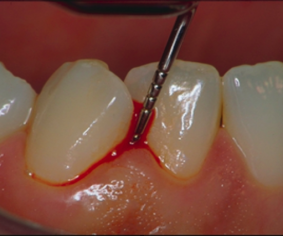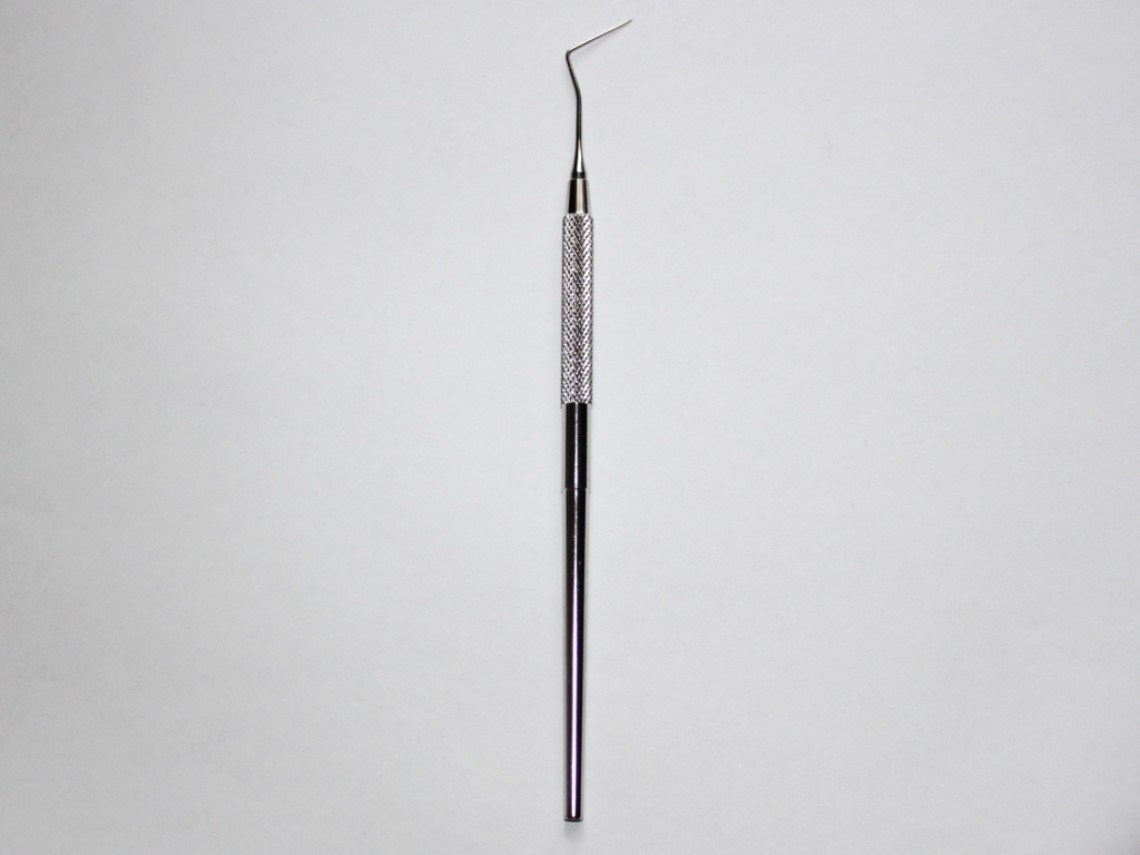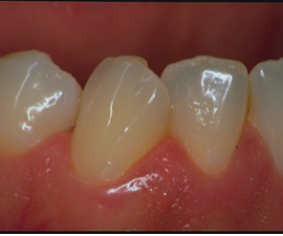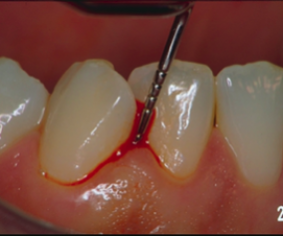PERIODONTAL TIP
Bleeding on Probing

When we are doing a re-assessment of periodontal conditions following an active phase of non-surgical periodontal therapy (i.e. supra/sub-gingival debridement), we probe a sulcus/pocket to evaluate the probing depth, but also the Bleeding on Probing (BoP).
…these are my tips…
1. If bleeding is noted after probing (BoP +), it means not only that the examined site is inflamed, but also that there is a 30% of probability that gingivitis is progressing into periodontitis.
Therefore…periodontal disease is not stable at that site!
Key readings:
Badersten A, Nilvéus R, Egelberg J. Scores of plaque, bleeding, suppuration and probing depth to predict probing attachment loss. 5 years of observation following nonsurgical periodontal therapy. J Clin Periodontol. 1990 Feb;17(2):102-7.
Claffey N1, Nylund K, Kiger R, Garrett S, Egelberg J. Diagnostic predictability of scores of plaque, bleeding, suppuration and probing depth for probing attachment loss. 3 1/2 years of observation following initial periodontal therapy. J Clin Periodontol. 1990 Feb;17(2):108-14.
2. If you are probing a pocket > 5 mm and there is no bleeding after probing (BoP –), there is a 98% of probability of absence of further clinical attachment loss.
Therefore…your pocket is not getting worse!
Key reading:
Lang NP1, Adler R, Joss A, Nyman S. Absence of bleeding on probing. An indicator of periodontal stability. J Clin Periodontol. 1990 Nov;17(10):714-21.
From the above 2 tips, you can realize how important is the assessment of bleeding on probing (and not only the pocket depth!) for your future clinical decisions and treatment planning.
Jacopo Buti
Clinical Lecturer – Periodontology
Uploaded & formatted by:
Arjun Varma – BDS 4






